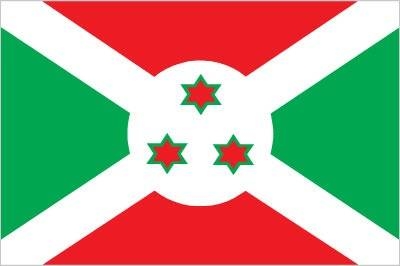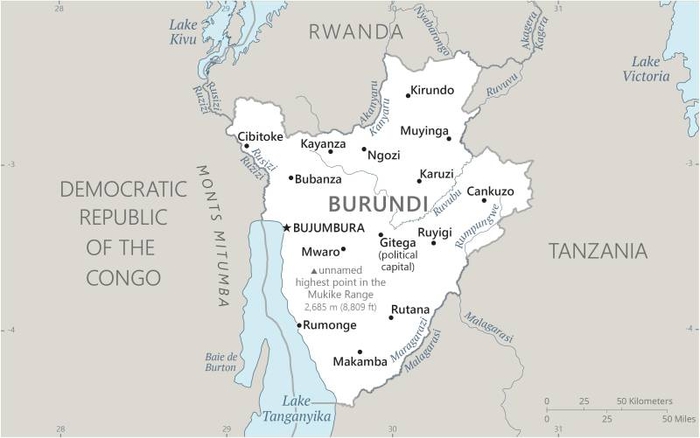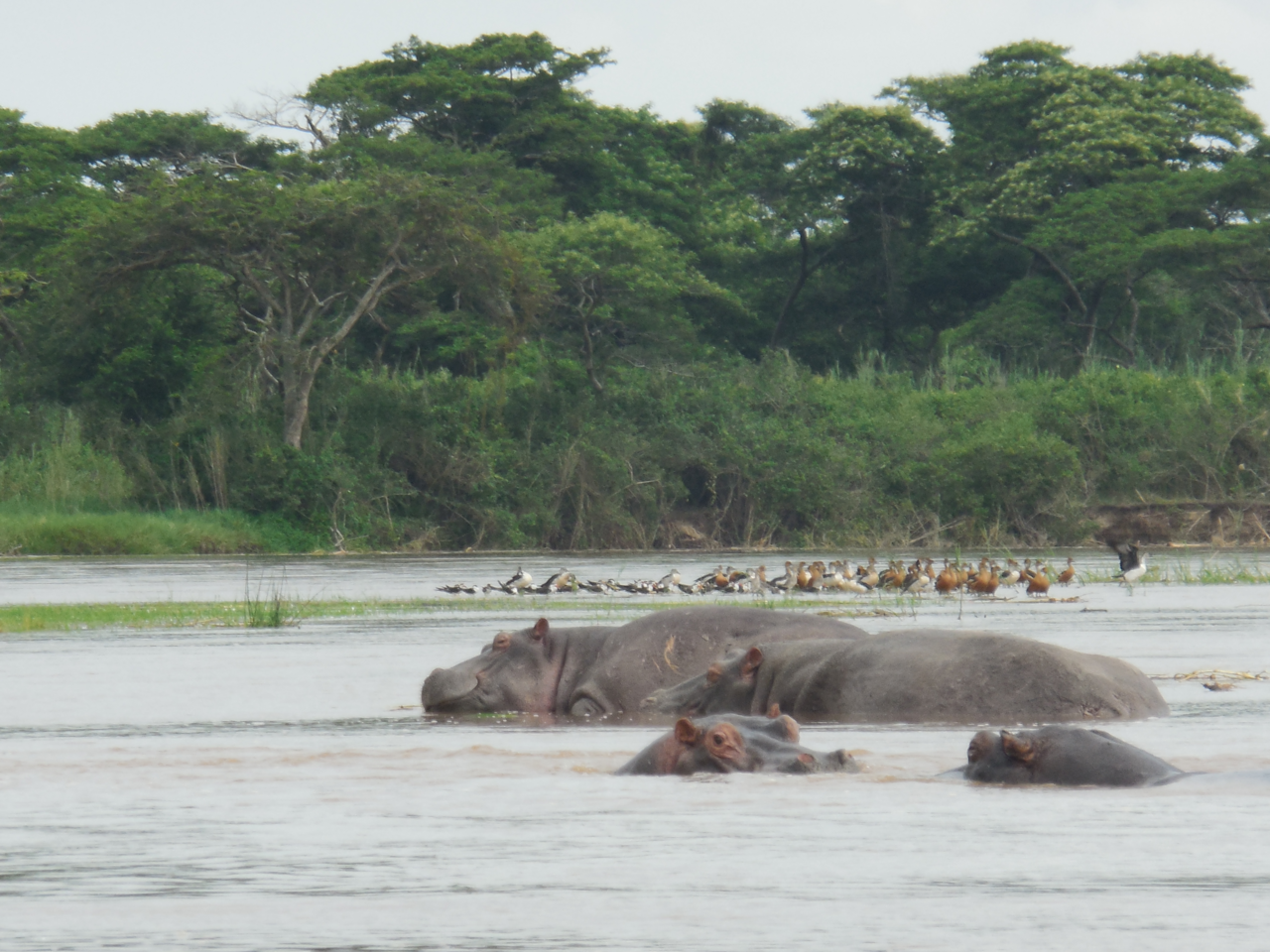182 Burundi

Divided by a white diagonal cross into red panels (top and bottom) and green panels (hoist side and fly side) with a white disk superimposed at the center bearing three red six-pointed stars outlined in green arranged in a triangular design (one star above, two stars below). Green symbolizes hope and optimism, white purity and peace, and red the blood shed in the struggle for independence. The three stars in the disk represent the three major ethnic groups: Hutu, Twa, Tutsi, as well as the three elements in the national motto: unity, work, progress.
Flag courtesy of the CIA World Factbook

Map courtesy of the CIA World Factbook

Hippos at Kibira National Park in northwest Burundi
Government
According to Britannica, under the 2005 constitution, power is to be shared by the Hutu and the Tutsi. Executive power is vested in the president, who is ordinarily elected directly to a five-year term, renewable once. The president appoints the Council of Ministers. There is a bicameral legislature, with power exercised by the National Assembly, which is mandated to comprise 60 percent Hutu and 40 percent Tutsi, and by the Senate, which includes one Hutu and one Tutsi representative from each province, with three seats reserved for former presidents. In addition, three seats in each house are reserved for the Twa, and at least 30 percent of the seats in both houses are to be held by women. Members of both houses, most of whom are elected by universal suffrage, serve five-year terms.
Burundi is divided into 17 provinces, which are further divided into communes. Power at the local level rests in the hands of centrally appointed authorities.
Burundi’s legal system is based on German and Belgian civil codes and customary law. The country’s highest court is the Supreme Court. Courts of appeal, administrative courts, a constitutional court, and tribunals of first instance, trade, and labour also exist in Burundi.
In 2005 the United Nations Security Council adopted a resolution to create a National Truth and Reconciliation Commission, as well as a special court to prosecute war crimes and human rights violations.
Burundi Civil Aviation Authority
Burundi Civil Aviation Authority
Airspace
SkyVector – Google Maps – ADS-B Exchange
ICAO countries publish an Aeronautical Information Publication (AIP). This document is divided into three parts: General (GEN), En Route (ENR) and Aerodromes (AD). ENR 1.4 details the types of airspace classes they chose to adopt from classes A through G.
Drone Regulations
Advanced Air Mobility (AAM) Regulations & Policies
None found by the author.
However, should you, the reader, happen to stumble across something to the contrary, please email the author at FISHE5CA@erau.edu and you may be mentioned in the ACKNOWLEDGEMENTS section of this book by way of thanks for contributing to this free eBook!
Advanced Air Mobility (AAM) News
None found by the author.
However, should you, the reader, happen to stumble across something to the contrary, please email the author at FISHE5CA@erau.edu and you may be mentioned in the ACKNOWLEDGEMENTS section of this book by way of thanks for contributing to this free eBook!
Short Essay Questions
Scenario-Based Question
You have been hired by a Drone Startup Company. Your boss has immediately assigned this job to you.
They need you to prepare a one-page memo detailing the legalities of using a drone to film hippos in Kibira National Park, pictured above.
They need you to mention any national laws and local ordinances.
They specifically want to know what airspace (insert pictures) you will be operating in and whether or not you need an airspace authorization.
Does it matter whether or not you are a citizen of the country?
Lastly, there is a bonus for you if, as you scroll through this chapter, you find any typos or broken links!
Short Essay Questions
- What are the drone categories?
- How is registration addressed?
- How is remote ID addressed?
- What are the model aircraft rules?
- What are the commercial drone rules?
- Are there waivers or exemptions to the rules? If so, for what?
- Would you share a link to an interactive airspace map?
- How is BVLOS addressed?
- How can you fly drones at night?
- How can you fly drones over people?
- Where do you find drone NOTAMs?
- What are the rules for drone maintenance?
- What are the rules for an SMS program?
- What are some unique rules not mentioned above?
- What are the C-UAS rules?
- What are the AAM rules?

